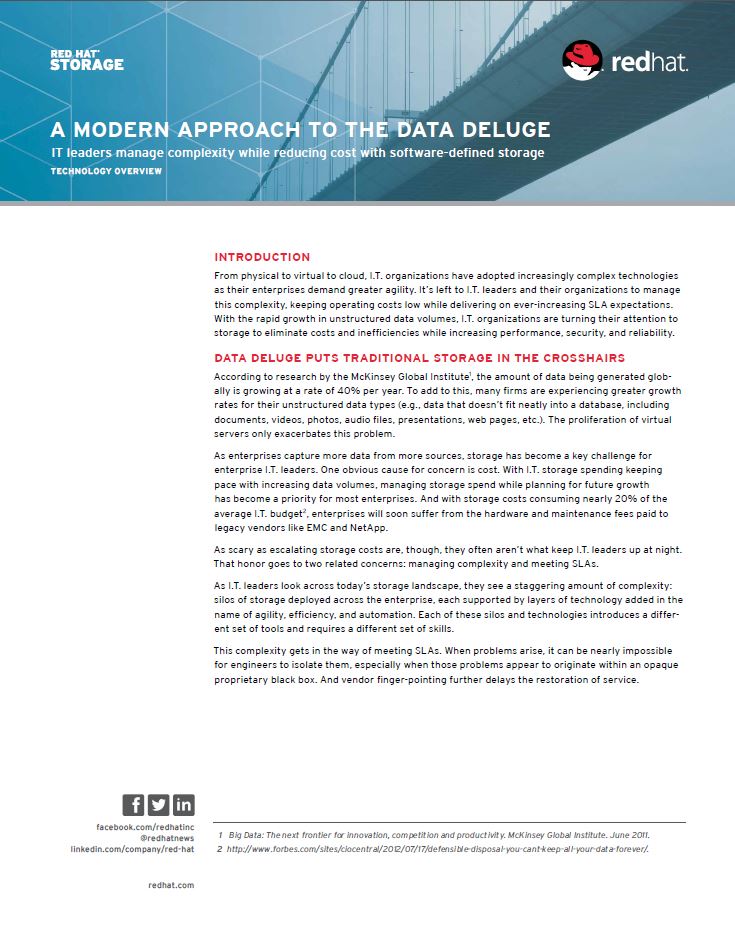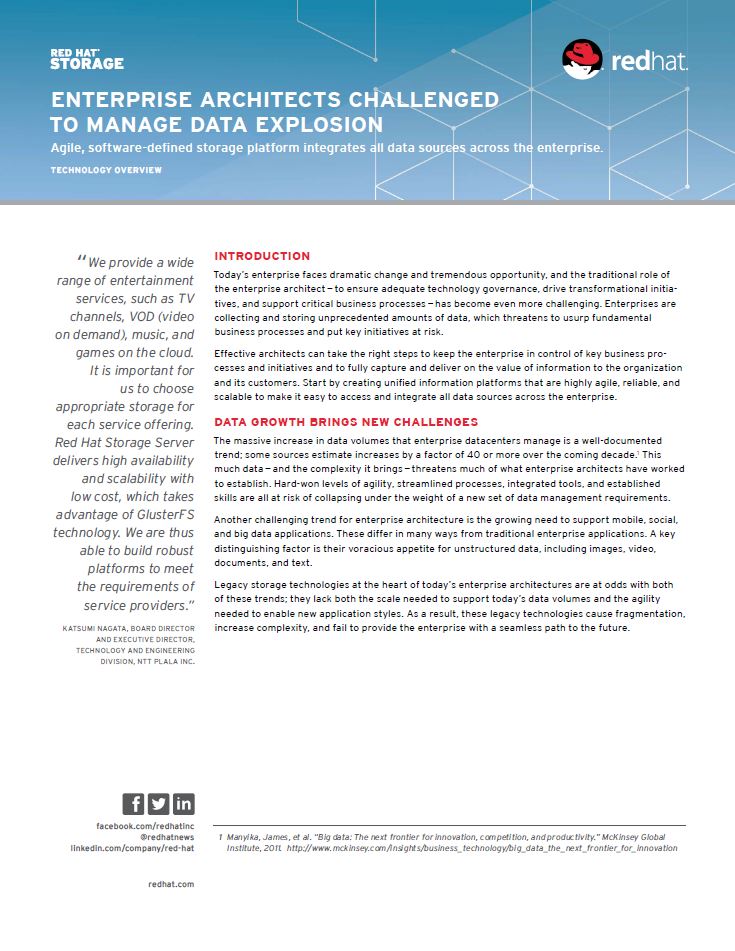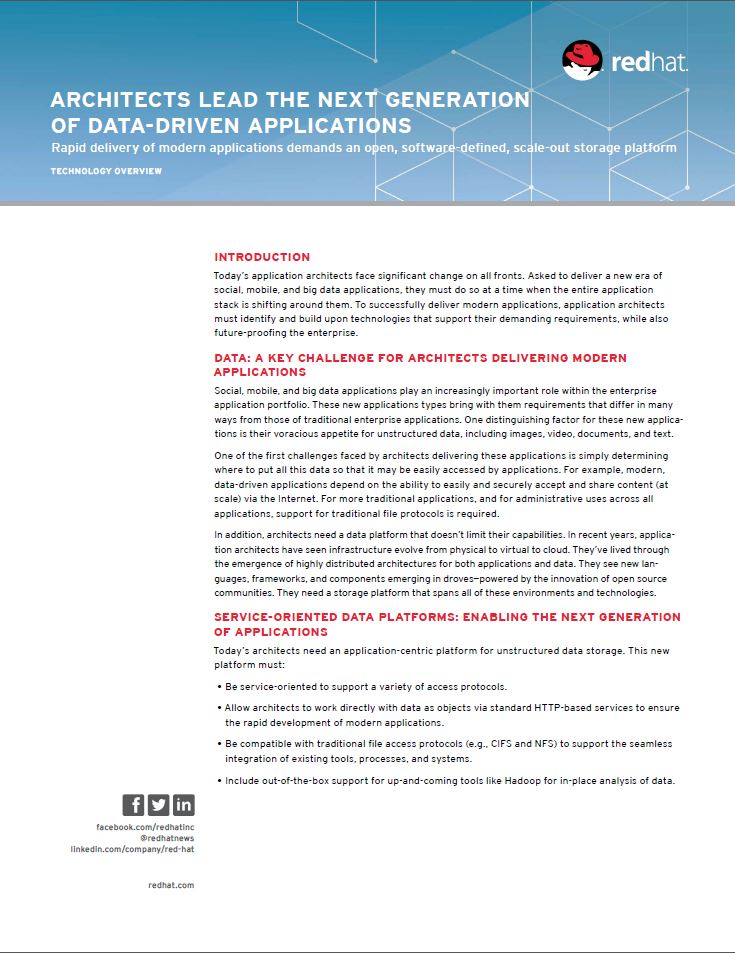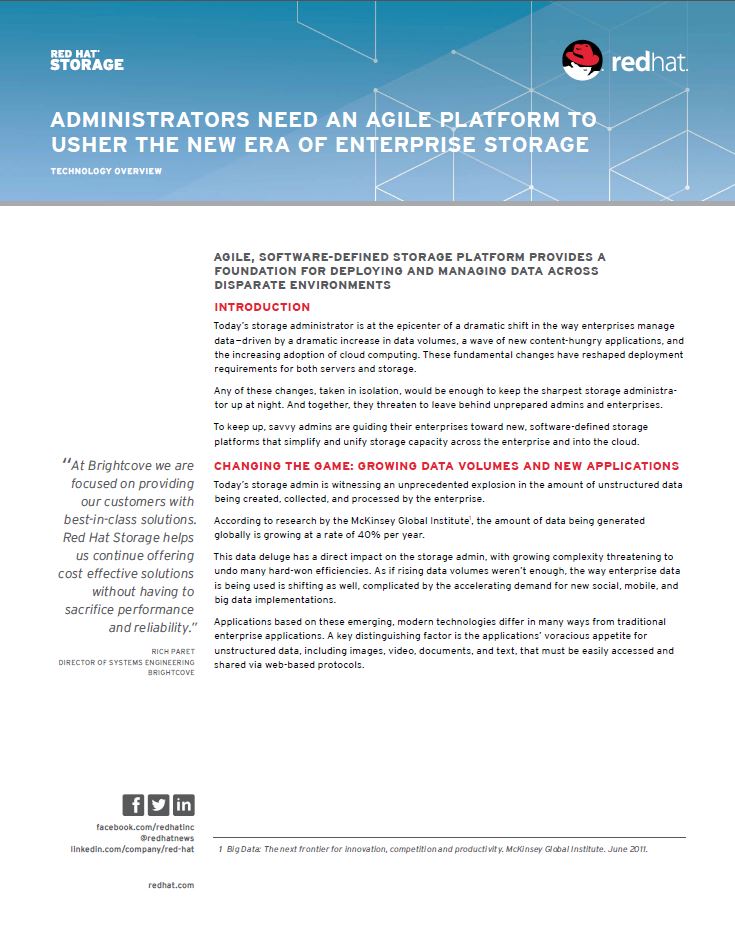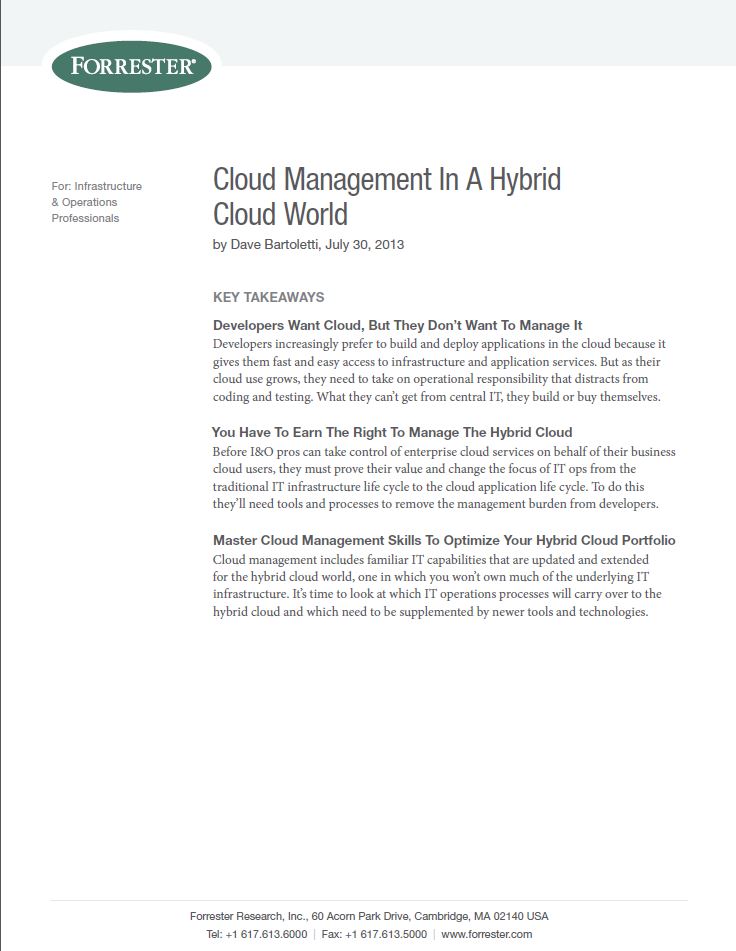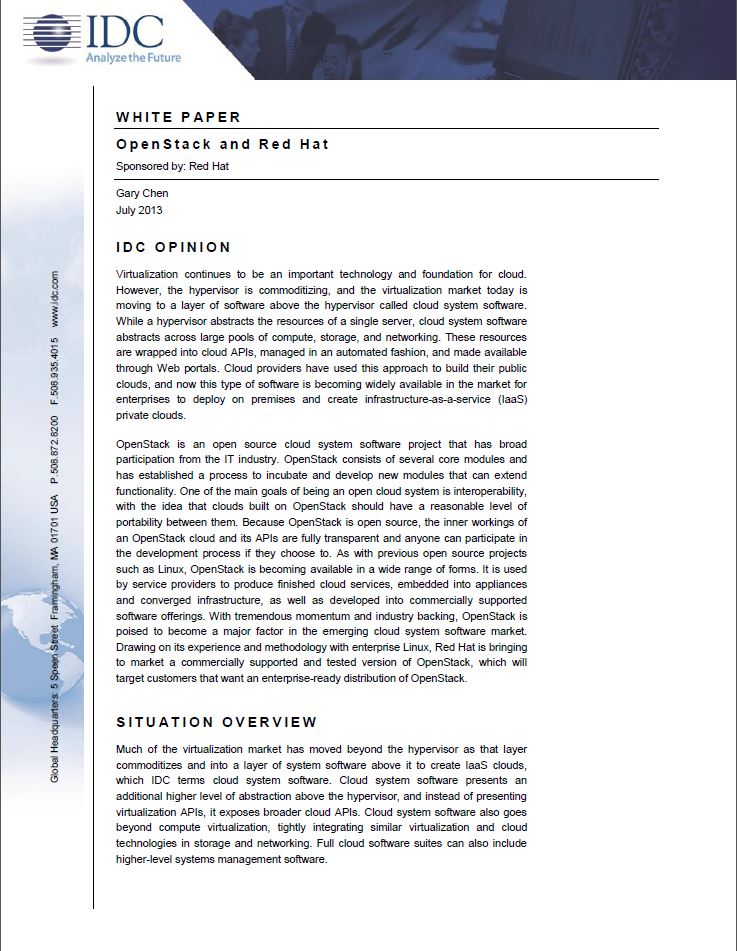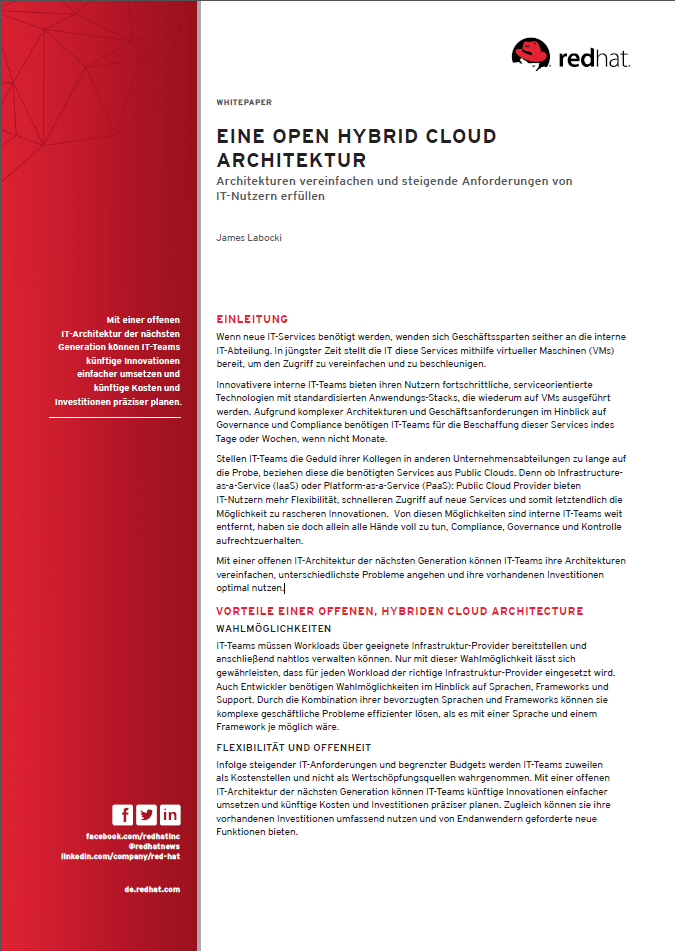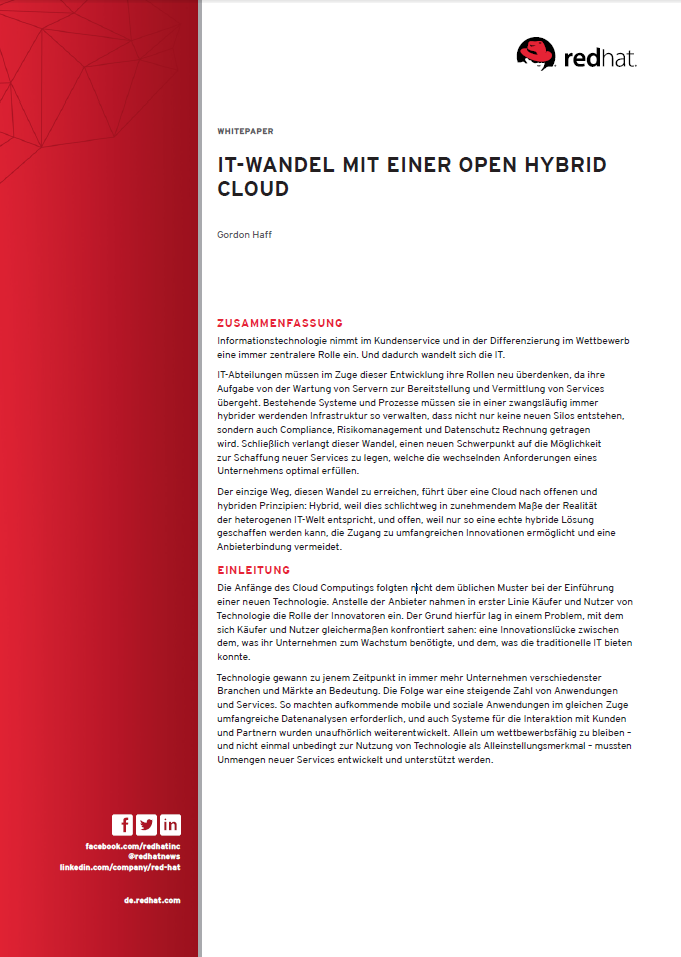A modern approach to the data deluge
From physical to virtual to cloud, I.T. organizations have adopted increasingly complex technologies as their enterprises demand greater agility. It’s left to I.T. leaders and their organizations to manage this complexity, keeping operating costs low while delivering on ever-increasing SLA expectations. With the rapid growth in unstructured data volumes, I.T. organizations are turning their attention
